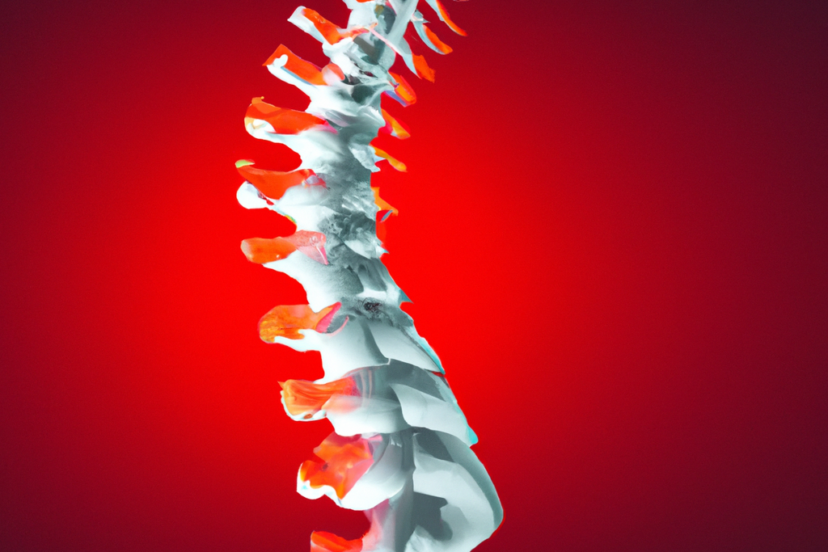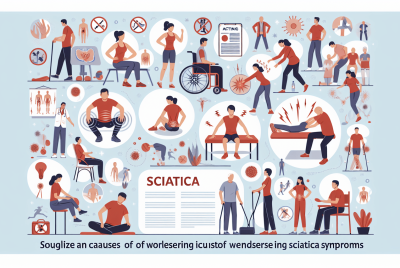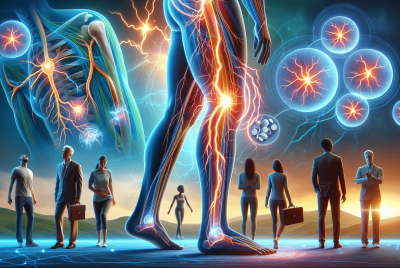Understanding The Root Causes Of Back Pain: A Comprehensive Guide
If you have ever experienced the discomfort and frustration of back pain, you are not alone. Back pain affects millions of people worldwide, making it one of the most common and debilitating health issues. In this comprehensive guide, we will explore the root causes of back pain, shedding light on the factors that contribute to this prevalent condition. By understanding these underlying causes, you will be better equipped to prevent and effectively manage back pain, ultimately improving your quality of life. Whether you are seeking relief or simply curious about the mechanics of back pain, this guide is your go-to resource for understanding the ins and outs of this pervasive issue.
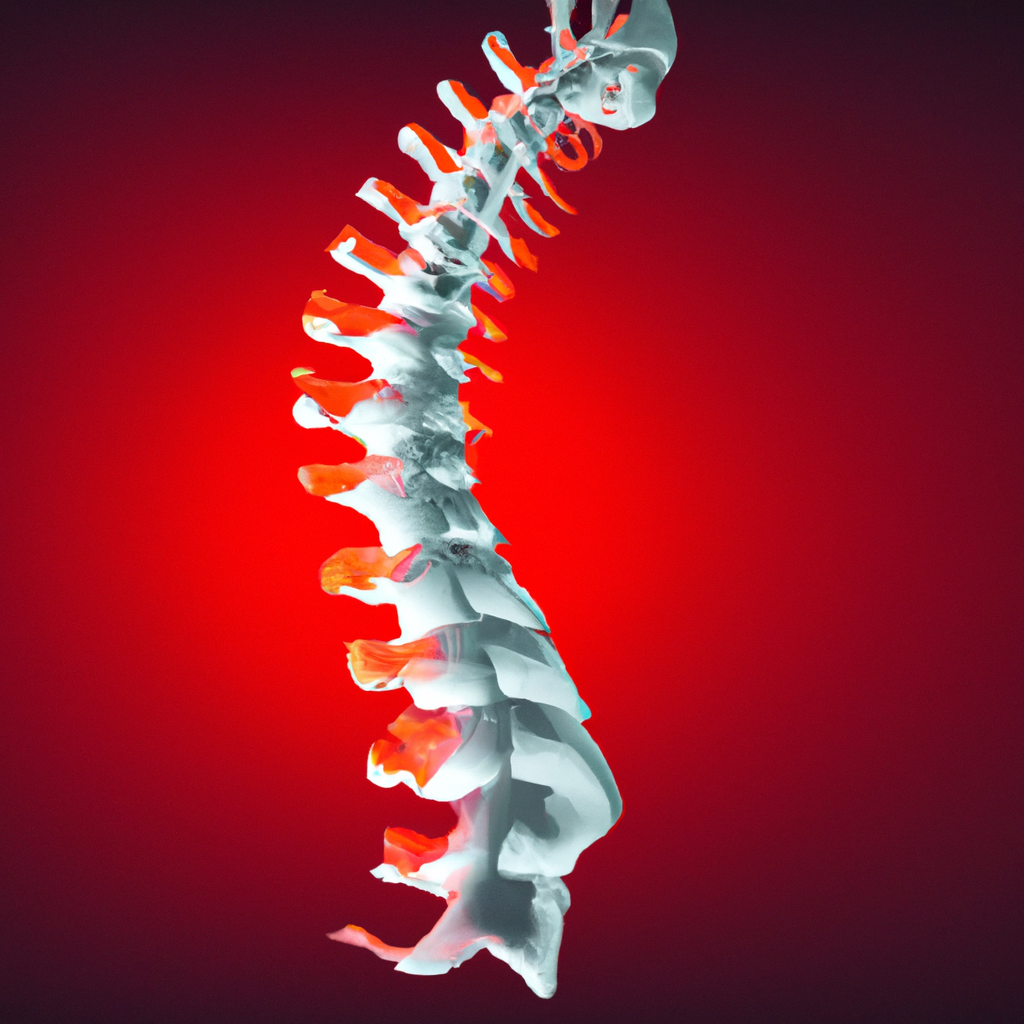
The Anatomy of the Back
The back is a complex structure made up of various components that work together to provide support, stability, and flexibility. At the core of the back is the vertebral column, also known as the spine. It is made up of 33 individual vertebrae, divided into five regions: cervical (neck), thoracic (mid-back), lumbar (lower back), sacrum, and coccyx (tailbone). Each vertebrae is interconnected by spinal discs, which act as shock absorbers and allow for movement. Surrounding the spine are muscles and ligaments that provide strength and support.
Vertebral Column
The vertebral column is the central axis of the back and plays a crucial role in providing support and protecting the spinal cord. The vertebrae are stacked on top of each other, with small joints between them that allow for movement. The cervical region, consisting of seven vertebrae, supports the weight of the head and allows for rotation and flexion. The thoracic region, composed of twelve vertebrae, provides stability and protects the organs in the chest. The lumbar region, made up of five vertebrae, bears the weight of the upper body and is responsible for most of the back’s flexibility. The sacrum and coccyx are fused vertebrae at the base of the spine that provide support and stability.
Spinal Discs
Located between each pair of vertebrae, spinal discs are cartilaginous structures that act as shock absorbers and allow for movement. They have a gel-like center called the nucleus pulposus and a tough outer ring called the annulus fibrosus. The discs provide cushioning, enable flexibility, and distribute the forces exerted on the spine during activities like walking, running, and lifting. As we age, the discs can degenerate or herniate, causing back pain.
Muscles and Ligaments
The muscles and ligaments of the back play a crucial role in providing stability, support, and movement. The muscles, including the erector spinae, multifidus, and deep intrinsic muscles, work together to maintain proper posture, control movement, and support the spine. Ligaments, such as the supraspinous ligament and interspinous ligament, connect the vertebrae and help stabilize the spine. These muscles and ligaments can become strained or injured, leading to back pain.
Types of Back Pain
Back pain can manifest in different ways, depending on the cause and duration. Understanding the different types of back pain can help identify the underlying issue and seek appropriate treatment.
Acute Back Pain
Acute back pain refers to sudden onset pain that lasts less than three months. It is often the result of muscle strains, ligament sprains, or injuries. Acute back pain can be caused by poor lifting techniques, sudden movements, or accidents. The pain can range from mild discomfort to severe, sharp pain, and it may interfere with daily activities. Most cases of acute back pain resolve with proper rest, pain management, and conservative treatment methods.
Chronic Back Pain
Chronic back pain is characterized by persistent pain that lasts more than three months. It is often associated with underlying medical conditions, degenerative changes, or structural abnormalities. Chronic back pain can have a profound impact on quality of life, affecting sleep, mobility, and overall well-being. It may require a multi-disciplinary approach to management, including physical therapy, medication, and lifestyle modifications.
Sciatica
Sciatica refers to the pain that radiates along the sciatic nerve, which runs from the lower back down through the hips, buttocks, and legs. It is often caused by compression or irritation of the nerve roots in the lumbar spine. Sciatica can cause sharp, shooting pain, numbness, tingling, or weakness in the affected leg. Treatment for sciatica may include pain medication, physical therapy, and targeted exercises to relieve the pressure on the nerve.
Scoliosis
Scoliosis is an abnormal sideways curvature of the spine. It can develop during childhood or adolescence, causing the spine to curve in an “S” or “C” shape. While mild cases may not cause significant symptoms, severe scoliosis can lead to back pain, difficulty breathing, and postural imbalances. treatment options for scoliosis depend on the severity of the curvature and may include bracing, physical therapy, or, in severe cases, surgery.
Common Risk Factors
Certain risk factors can increase the likelihood of developing back pain. While some factors are beyond our control, others can be modified or managed to reduce the risk.
Poor Posture
Maintaining good posture is essential for the health of our back. Poor posture, such as slouching or using improper ergonomics, can put unnecessary strain on the spine and contribute to back pain. It is important to be mindful of our posture during activities like sitting, standing, and lifting heavy objects.
Obesity
Excess weight can put added stress on the spine and increase the risk of developing back pain. The additional weight can disrupt the natural alignment of the spine and strain the supporting structures. Adopting a healthy lifestyle, including regular exercise and a balanced diet, can help manage weight and reduce the risk of back pain.
Sedentary Lifestyle
Leading a sedentary lifestyle, characterized by long periods of sitting or inactivity, can weaken the muscles that support the spine. Lack of physical activity can lead to muscle imbalances, decreased flexibility, and overall weakness, increasing the risk of back pain. Incorporating regular exercise and movement into daily routines can help maintain spinal health.
Smoking
Smoking has been linked to various health issues, including back pain. Nicotine can affect blood flow, potentially impairing the delivery of essential nutrients to the spinal discs. Additionally, smoking can hinder the healing process and increase the risk of complications following back surgery. Quitting smoking can have numerous benefits for overall health, including reducing the risk of back pain.
Age
As we age, the structures of the spine naturally undergo degenerative changes. Spinal discs may lose moisture and become less flexible, increasing the risk of disc herniation and degenerative disc disease. The vertebrae may develop osteoarthritis or other age-related conditions that can contribute to back pain. While we cannot stop the aging process, maintaining a healthy lifestyle and taking precautions to protect the spine can help minimize the impact of age-related changes.
Injuries and Trauma
Injuries and trauma can cause significant damage to the back and result in acute or chronic pain. Understanding the types of injuries and their potential effects can help identify the appropriate course of treatment.
Sprains and Strains
Sprains and strains are common injuries that can affect the muscles, ligaments, and tendons in the back. A sprain occurs when a ligament is stretched or torn, while a strain involves the muscles or tendons. These injuries can occur due to sudden movements, lifting heavy objects, or accidents. Depending on the severity, treatment may include rest, ice, compression, and physical therapy.
Herniated Discs
A herniated disc occurs when the inner gel-like substance of a spinal disc pushes through the outer ring, putting pressure on nearby nerves. This can cause pain, numbness, tingling, or weakness in the back and legs. Herniated discs can occur due to gradual wear and tear or sudden trauma. Treatment options may include rest, pain medication, physical therapy, and in severe cases, surgery.
Fractures
Fractures in the vertebrae can cause severe back pain and mobility limitations. They can be the result of trauma, such as a fall or car accident, or as a result of conditions like osteoporosis. Treatment for vertebral fractures may involve bracing, pain medication, physical therapy, and in some cases, surgery.
Whiplash
Whiplash refers to an injury to the neck and upper back caused by a sudden jerking motion, commonly associated with car accidents. The abrupt movement can strain the muscles, ligaments, and discs in the neck and upper back, leading to pain, stiffness, and restricted range of motion. Treatment for whiplash often involves rest, pain management, physical therapy, and exercise.
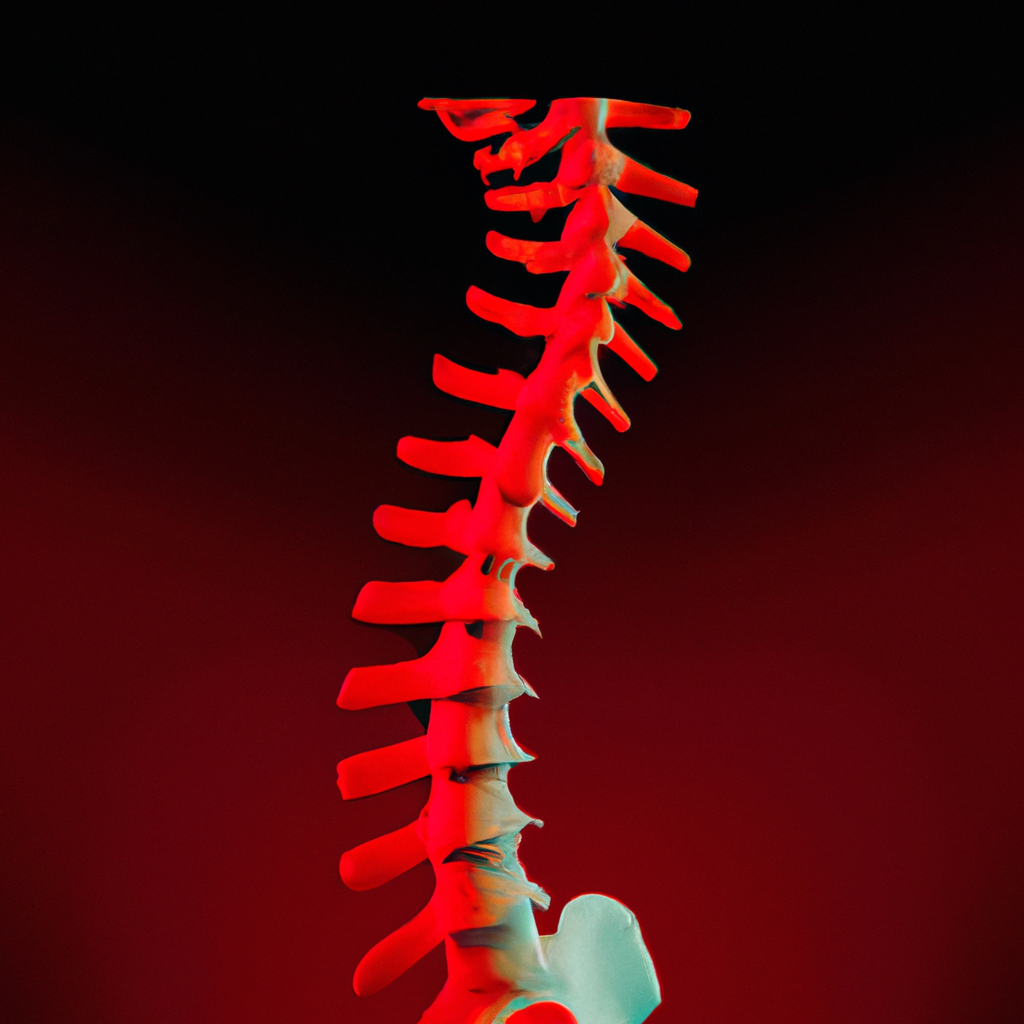
Degenerative Conditions
Degenerative conditions are age-related changes that can affect the back. These conditions can cause chronic pain and stiffness, gradually impairing mobility and quality of life.
Osteoarthritis
Osteoarthritis is a degenerative joint disease that commonly affects the spine. As the protective cartilage within the joints wears away, the joints can become inflamed, causing pain, stiffness, and decreased mobility. Treatment options for osteoarthritis may include pain medication, physical therapy, exercise, and lifestyle modifications.
Degenerative Disc Disease
Degenerative disc disease refers to the gradual breakdown of the spinal discs due to wear and tear over time. As the discs lose hydration and become thinner, they may no longer effectively cushion the vertebrae, leading to pain and mobility issues. Treatment for degenerative disc disease may involve pain management, physical therapy, and, in severe cases, surgery.
Spondylolisthesis
Spondylolisthesis is a condition in which a vertebra slips forward and misaligns with the vertebra below it. This can lead to back pain, nerve compression, and instability. Spondylolisthesis can be caused by degenerative changes, trauma, or congenital conditions. Treatment options may include physical therapy, pain medication, bracing, or in severe cases, surgery.
Muscle Imbalances
Muscle imbalances occur when certain muscles are stronger or tighter than others, causing an imbalance in muscle strength and flexibility. These imbalances can impact the alignment and stability of the spine, leading to back pain and postural abnormalities.
Weak Core Muscles
Weak core muscles, including the abdominal and back muscles, can contribute to poor posture and increased strain on the spine. Strengthening the core muscles through targeted exercises can help support the spine, improve posture, and reduce the risk of back pain.
Tight Hip Flexors
Tight hip flexor muscles, which connect the upper thigh to the pelvis, can pull the spine into an unnatural position, leading to back pain and postural imbalances. Regular stretching and exercises that target the hip flexors can help alleviate tension and improve spinal alignment.
Imbalanced Muscle Strength
Imbalances in muscle strength between opposing muscle groups, such as the chest and upper back muscles, can affect the alignment and stability of the spine. Targeted exercises that strengthen the weaker muscles and stretch the tighter muscles can help restore balance and reduce the risk of back pain.
Postural Abnormalities
Postural abnormalities refer to deviations from the ideal alignment of the spine, which can cause strain and discomfort. Various postural deviations can affect the back and may require interventions to improve alignment.
Lordosis
Lordosis, also known as swayback or saddleback, is an excessive inward curvature of the lumbar spine. This postural abnormality can lead to lower back pain and an increased risk of disc herniation. Treatment options may include physical therapy, postural exercises, and the use of supportive braces or orthotics.
Kyphosis
Kyphosis is an excessive outward curvature of the thoracic spine, leading to a rounded upper back. It can cause back pain and postural imbalances. Depending on the severity, treatment options may include physical therapy, exercises to strengthen the back muscles, and postural correction techniques.
Swayback
Swayback, also known as flatback or hypolordosis, is a condition characterized by a flattening of the normal lumbar curve and an anterior pelvic tilt. This can lead to muscle imbalances, lower back pain, and stiffness. Physical therapy, postural exercises, and lifestyle modifications may be recommended to improve alignment and reduce pain.
Flatback
Flatback, as the name suggests, refers to a loss or decrease in the natural lumbar curve. This can cause the pelvis to tilt backward and shift the body’s center of gravity, resulting in strain and discomfort. Treatment options may include physical therapy, exercises to strengthen the back muscles, and postural correction techniques.
Medical Conditions
Certain medical conditions unrelated to the musculoskeletal system can manifest as back pain. Understanding these conditions can help identify the root cause of back pain and seek appropriate medical care.
Kidney Infections
Kidney infections, also known as pyelonephritis, can cause back pain as one of their symptoms. The pain is often felt in the flank area on one side of the back, and it may be accompanied by other symptoms such as fever, urinary urgency, or blood in the urine. Kidney infections require prompt medical attention and treatment with antibiotics.
Endometriosis
Endometriosis is a condition in which the tissue lining the uterus grows outside the uterus, often affecting the ovaries, fallopian tubes, and pelvic area. In some cases, it can cause back pain, particularly during menstruation. Treatment for endometriosis may include pain medication, hormonal therapy, or surgery.
Fibromyalgia
Fibromyalgia is a chronic pain disorder characterized by widespread musculoskeletal pain, fatigue, and tender points in specific areas of the body. While the pain can be felt throughout the body, it commonly affects the back and neck. Treatment for fibromyalgia often involves a multi-disciplinary approach, including medication, physical therapy, and lifestyle modifications.
Occupational Hazards
Various occupational hazards can contribute to the development of back pain. Understanding these risks can help individuals take necessary precautions to protect their backs in the workplace.
Heavy Lifting
Jobs that involve heavy lifting or repetitive lifting of objects can put significant strain on the back, leading to muscle strains, sprains, or disc injuries. Using proper lifting techniques, such as bending the knees and lifting with the legs instead of the back, can help prevent back injuries. If heavy lifting is a regular part of the job, using lifting aids or requesting assistance can minimize the risk of back pain.
Repetitive Motion
Repetitive motions, such as those performed in assembly line work or computer use, can strain the muscles and tendons in the back, leading to overuse injuries and pain. Taking regular breaks, incorporating stretching exercises, and maintaining good posture during repetitive tasks can help reduce the risk of developing back pain.
Prolonged Sitting
Jobs that require prolonged sitting, such as desk jobs, can contribute to poor posture and muscle imbalances. Sitting for long periods without breaks can weaken the back muscles and increase the risk of developing back pain. Taking regular standing breaks, using ergonomic chairs and workstations, and incorporating stretching and strengthening exercises into the daily routine can help minimize the impact of prolonged sitting on the back.
Prevention and Treatment
Preventing and managing back pain involves a multi-faceted approach that addresses the underlying cause, promotes healthy habits, and incorporates appropriate treatment modalities.
Exercise and Physical Therapy
Regular exercise, including strength training, cardiovascular workouts, and flexibility exercises, can help strengthen the muscles supporting the back, improve posture, and increase flexibility. Physical therapy, guided by a healthcare professional, can also play a significant role in managing and rehabilitating back pain.
Maintaining a Healthy Weight
Maintaining a healthy weight through a balanced diet and regular exercise can reduce the stress on the spine, support proper alignment, and decrease the risk of back pain. Losing excess weight can alleviate strain on the back and improve overall mobility and well-being.
Improving Posture
Maintaining good posture is critical for spinal health. Being mindful of posture during various activities, such as sitting, standing, and lifting, can help reduce strain on the spine. Using supportive chairs and ergonomic workstations can also promote proper posture.
Ergonomic Adjustments
Making ergonomic adjustments to the workspace can help minimize the risk of developing back pain. This may include using chairs with proper lumbar support, positioning computer monitors at eye level, and utilizing adjustable desks and workstations. Ergonomic adjustments are particularly important for individuals with desk jobs or occupations that require prolonged sitting.
Pain Management Strategies
For individuals experiencing acute or chronic back pain, various pain management strategies can provide relief. These may include over-the-counter or prescription pain medications, hot or cold therapy, physical therapy interventions such as massage or ultrasound, and complementary therapies like acupuncture or chiropractic care.
Understanding the root causes of back pain empowers individuals to make informed decisions about prevention, seek appropriate treatment, and manage their back health effectively. By adopting a holistic approach that addresses lifestyle factors, incorporates physical activity, and emphasizes proper body mechanics, individuals can reduce their risk of developing back pain and improve their overall well-being.

